During one of my recent visits to Transylvania, I stumbled upon the Saxon Cemetery in Sighisoara. This graveyard is high up a hill, next to the famous Biserica din Deal (aptly translated as “Church on the Hill”). Some believe this cemetery has a link to the famous story of the Pied Piper of Hamelin, where children followed a magical piper and vanished; some say they ended up here.
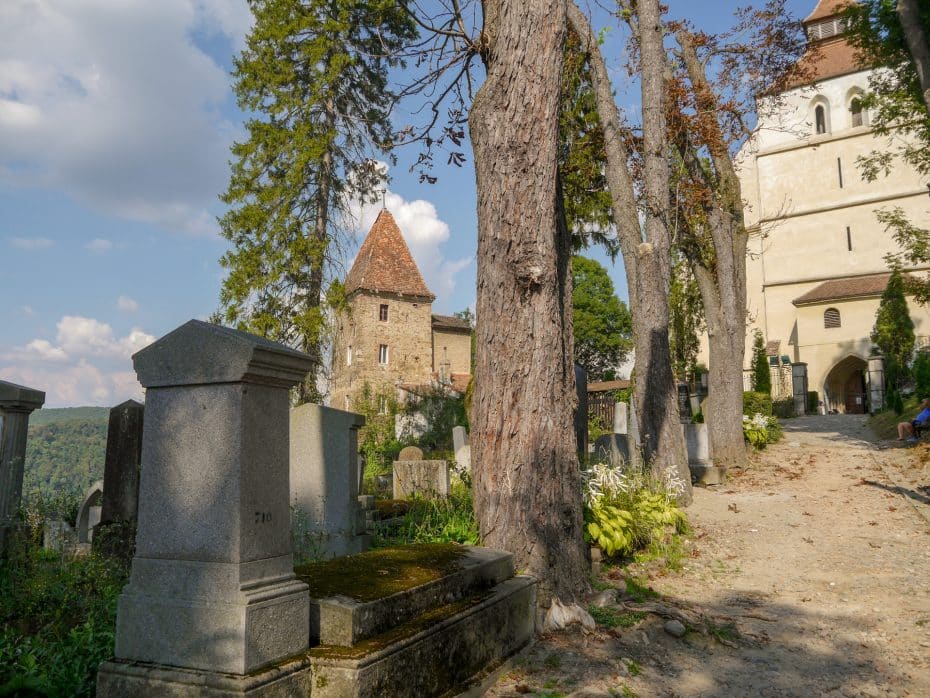
To get there, you must climb a covered staircase with 175 steps, known as the Scholars’ Stairs. Built in the 19th century, these steps were designed so schoolchildren and churchgoers could reach the school and church during winter without trudging through snow.
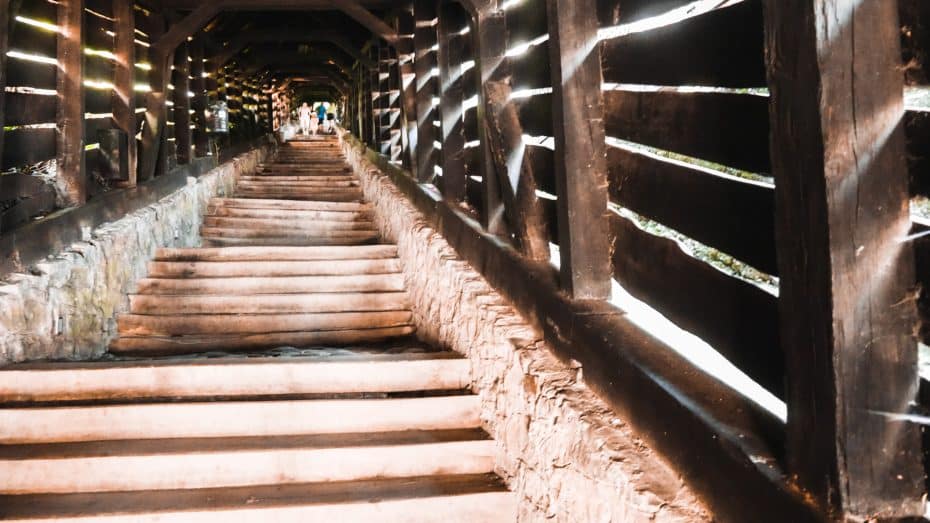
The cemetery itself is a quiet place with old tombstones that date back centuries. Many stones carry inscriptions in German, hinting at the lives of the Saxons who once lived here. You see, Sighisoara was part of the historical region of Transylvania, where Saxons settled. In fact, Sighisoara is one of the seven fortified Saxon cities of Transylvania, together with Brasov (Kronstadt), Cluj (Klausenburg), Sibiu (Hermannstadt), Bistrita (Bistritz), Medias (Mediasch), and Sebes (Mühlbach).
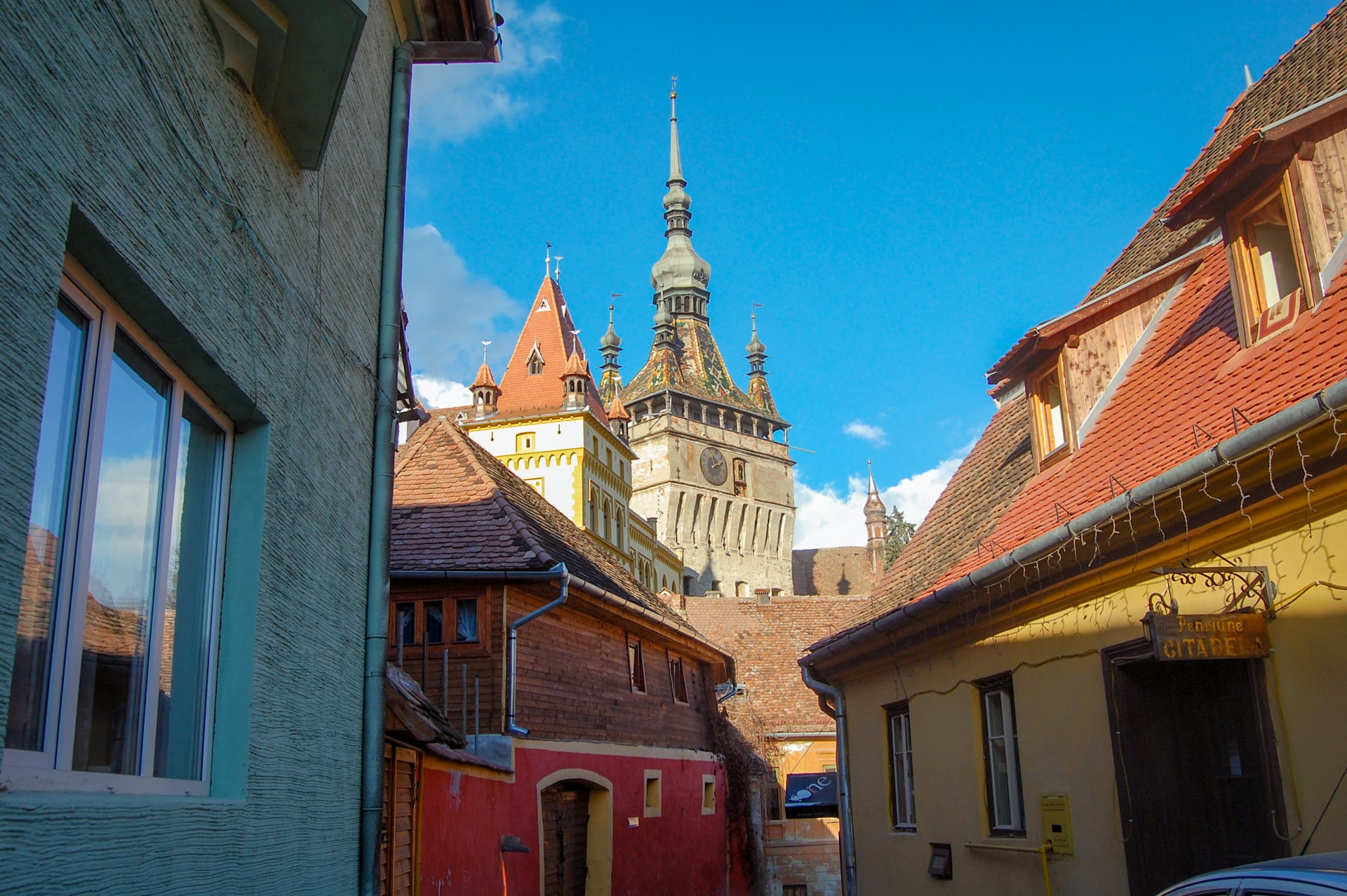
Sighisoara and The Pied Piper of Hamelin
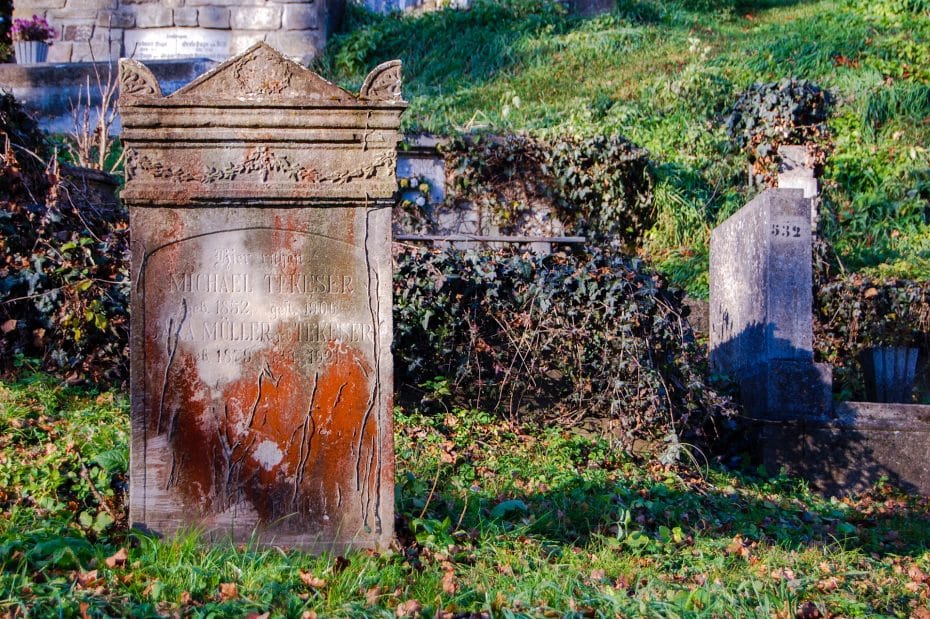
If the Saxon Cemetery in Sighisoara could talk, it might whisper tales of children spirited away from their homes far away in Germany. Ever heard of the Pied Piper?
The story goes that one day, the German town of Hamelin was overrun by a plague of rats. In desperation, the local folks sought the help of a Pied Piper, who was hired to hypnotize the rats with his flute and lead them to the river to drown.
After completing his task, the piper demanded the gold he had promised the town villagers in exchange for his services. The people of Hamelin refused to pay. In revenge, the piper took his instrument and hypnotized the town children into leaving town, never to be seen again.
Well, so far, so normal. What you probably don’t know is the Transylvanian version of the story.
It turns out that the Pied Piper was a Romani person skilled in dark, powerful magic (old-timey European tales get racist real quickly). These lost children of Hamelin ended up in a cave in Transylvania, from where they emerged to inhabit these lands and found new cities.
The Proven History of Saxon Presence in Romania
As much as I want to believe such a cool story, including flutes, Travelers, and rats, the truth is that the presence of Germans in Transylvania has a much more boring origin.
The fortified villages were established in the twelfth century by settlers from the Moselle region. Saxons were brought to Transylvania by local Hungarian rulers, who wanted the Saxons to establish in the mountain passes to defend the kingdom from the Ottomans and Tatars.
For this reason, there is a significant minority of Germans in Transylvania, and that’s why there is a German cemetery in Sighisoara, located in the citadel, just behind the church.
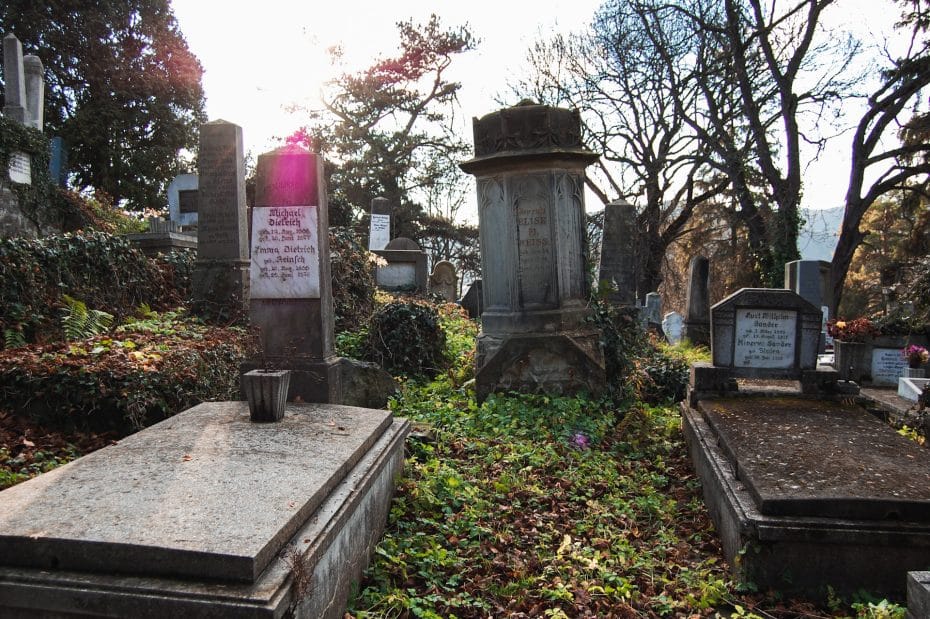
Unlike other graveyards, Sighisoara’s German cemetery does not host any dead celebrities or monumental mausoleums, but its charm resides in its serenity and the mere fact of its existence.
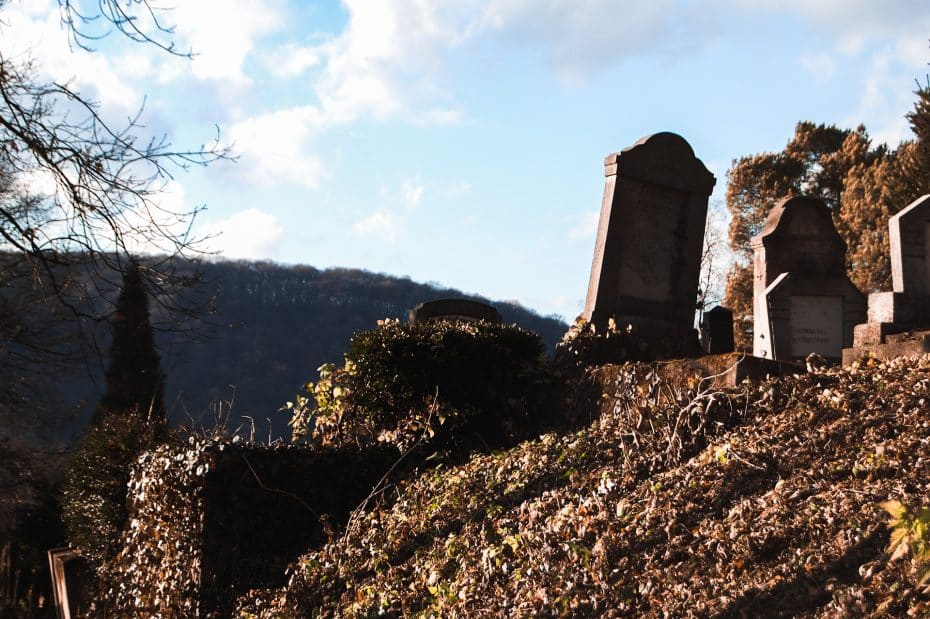
Sighisoara Saxon Cemetery: Useful Tips for Your Visit
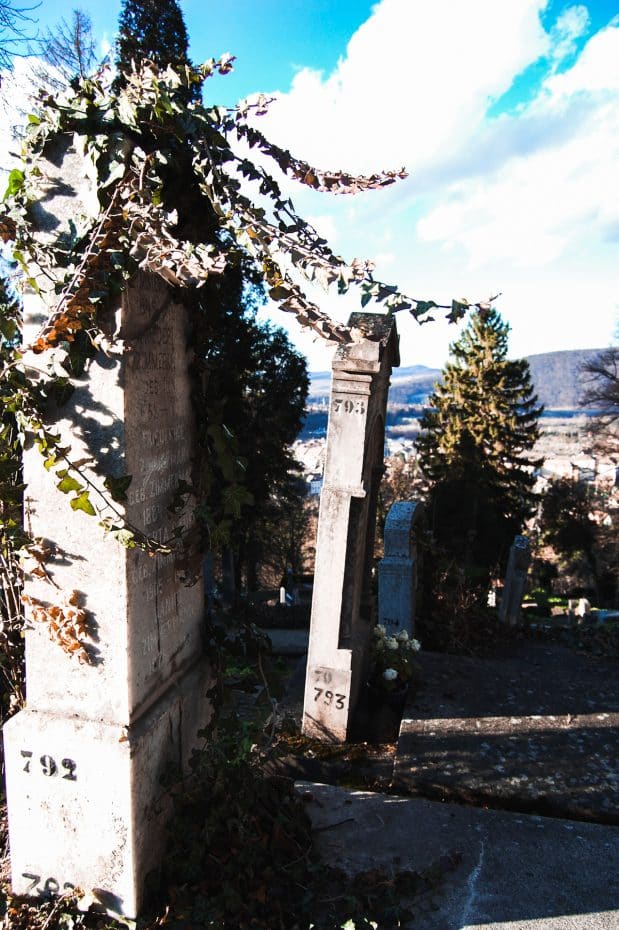
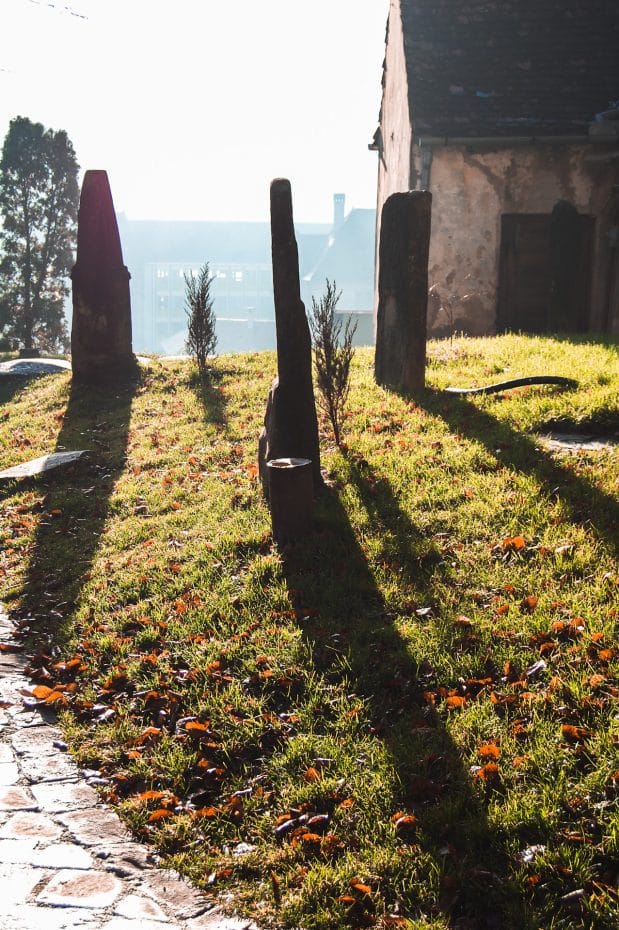
When planning to visit this cemetery, it is good to know some important information:
During spring and summer, you can visit from 10 a.m. until 5 p.m. However, when days get shorter in autumn and winter, it closes earlier. Before going, it’s a good idea to look online or ask locally for the most current open times.
No ticket is needed to walk around the cemetery, so you don’t have to pay. It’s free to go and have a look at the old stones and peaceful greenery.
Wear comfortable shoes because you will climb and walk on old paths. There is no fee to enter, but it is important to take care of such places. This means being quiet and respectful.
Taking pictures is allowed for those with cameras and phones, but please do so without disturbing the peace of the place. Many people think of this as more than an old cemetery. People from Sighisoara are buried here, so it’s important to be kind and not loud.
Travel Ideas & Nearby Attractions to Visit in Sighisoara
- Clock Tower (Turnul cu Ceas): This tower was built in the 14th century and is now a museum with historical displays.
- Vlad Dracul House: This is where Vlad Dracul, the father of Vlad the Impaler (associated with Dracula), was said to have been born in the early 15th century.
- The Stag House: Admire this old building, which has an interesting 17th-century stag painting on its walls.
- The Venetian House: This beautifully restored house from the 16th century features a carved stone head of a Venetian lion.
- Church of Dominican Monastery: This is one of the oldest buildings in Sighisoara, originating from the 13th century.
- Citadel Square (Piata Cetatii): The main square within Sighisoara’s citadel, where markets and fairs take place, surrounded by colorful medieval houses.








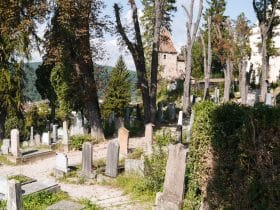

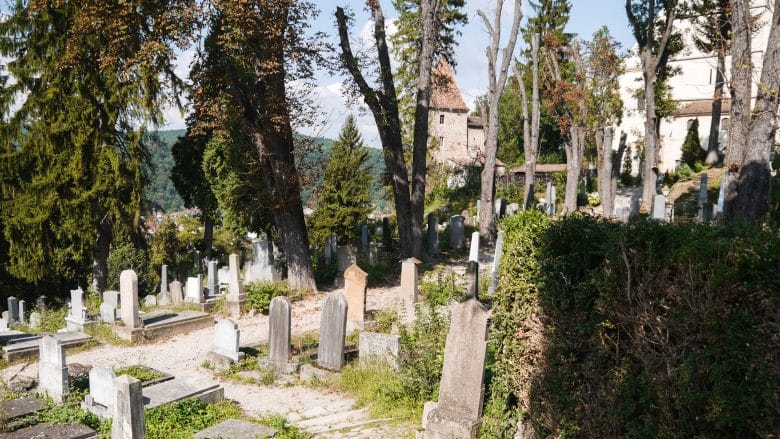




















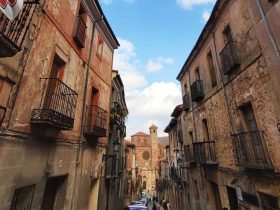



Leave a Reply
View Comments